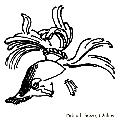
|
Ancient American Helmet
|
|
Ancient American helmet drawn from a bas-relief of Palanqué. |
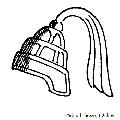
|
Ancient Mexican Helmet
|
|
Ancient Mexican helmet drawn from a bas-relief of great antiquity at Hochicalco, in the province of Quemaraca, Mexico. |
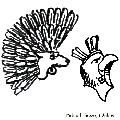
|
Two Mexican Helmets
|
|
Two Mexican helmets drawn from a 15th century Mexican manuscript that are property of M. de Waldeck. |

|
Mexican Helmet In Solid Gold
|
|
15th century Mexican helmet in solid gold and ornamented with feathers and is a part of a royal suit that was destroyed in Mexico by fire. |
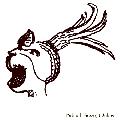
|
15th Century Mexican Helmet
|
|
15th century Mexican helmet in leather, wood, leopard skin and feathers. |
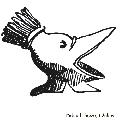
|
15th Century Mexican Helmet
|
|
15th century Mexican helmet in wood, leather and feathers. |

|
Assyrian Bronze Helmet
|
|
Ancient Assyrian bronze helmet with conical shape found in the Christian Middle Ages. From British Museum. |
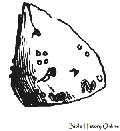
|
Assyrian Helmet In Iron
|
|
Ancient Assyrian helmet in iron said to be from Kouyunjik. This is a valuable piece of armour for history since it shows the use of iron in the time which is called the Age of Bronze of the ancients. British Museum. |
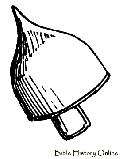
|
Helmet Of Assyrian Horseman
|
|
Helmet of Assyrian horseman, probably in bronze which is interesting for its cheek-plates. Drawn from bas-relief of Nineveh, B.C. 700. From Museum of the Louvre. |
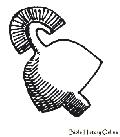
|
Helmet Of Assyrian Foot Soldier
|
|
Helmet of Assyrian foot-soldier, probably in bronze. From a bas-relief of Nineveh of the time of Sardanapalus V, B.C. 700. From Museum of the Louvre. |
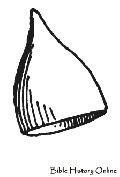
|
Helmet Without Chin Strap
|
|
Helmet without chin-strap, probably in bronze, worn by the Assyrian archers and auxiliaries. From a bas-relief, B.C. 1000. Museum of the Louvre. |

|
Two Assyrian Helmets
|
|
Two Assyrian helmets, probably in bronze, from bas-reliefs. |
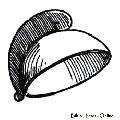
|
Persian Helmet
|
|
Persian helmet from a group representing Mithras sacrificing a bull. |

|
Helmet Or War Headdress Of Persian Archer
|
|
Metal helmet or war headdress of Persian chief, from a bas-relief now in the British Museum. |
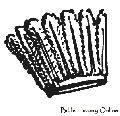
|
Helmet Or Headdress of Persian Archer
|
|
Helmet or headdress of Persian archer, from a bas-relief of Persepolis, B.C. 560. Cast is found in the British Museum. |

|
Persian Helmet With Movable Plates
|
|
Persian helmet with movable plates, probably in bronze, from a Persian bas-relief. B.C. 560, cast of which is in the British Museum. |

|
Persian Helmet With Cheek-Plates And Neck-Covering
|
|
Persian helmet with cheek-plates and neck-covering, from a bas-relief, casts of which are at the Louvre and British Museum. |
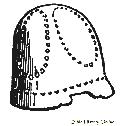
|
Bronze Persian Helmet
|
|
Bronze Persian helmet of the reign of the dynasty of the Sassanides (A.D. 226-652). Found in the British Museum. |

|
Headdress Of Assyrian Archer
|
|
Headdress of Assyrian archer called fillet, which protected the top of the head. With chin-strap or leather mounted with metal cheek-plates. From bas-reliefs in the British, Louvre and Berlin Museums. |

|
Greek Casque Called Kataityx
|
|
Greek leather casque called "kataityx". 8th century B.C., with chin strap and copied from a bronze statuette of Diomed. |
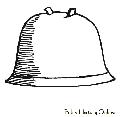
|
Etruscan Casque
|
|
First period bronze Etruscan casque. From Musée de Artillerie de Paris. |
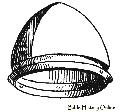
|
Bronze Etruscan Casque
|
|
Bronze Etruscan casque preserved in the Louvre. Attributed to archaic times. |
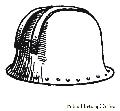
|
Bronze Casque
|
|
Bronze casque from Museum of St. Germain, attributed to the Umbrians. |

|
Bronze Etruscan Casque With Long Antennae
|
|
Bronze Etruscan casque with long antennae. |
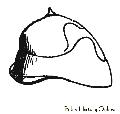
|
Archaic Etruscan Bronze Casque
|
|
Archaic Etruscan bronze casque with figured vizor. British Museum. |

|
Greek Casque
|
|
Ancient bronze Greek casque. British Museum. |
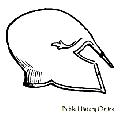
|
Greek Casque Of A Hoplite
|
|
Ancient bronze Greek casque of a hoplite, copied from a statue of that time. |
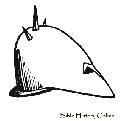
|
Greek Casque In Bronze
|
|
Ancient Greek casque in bronze. From Arsenal of Turin. |
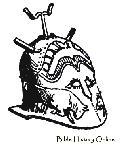
|
Admirable Piece Of Greek Casque
|
|
Bronze Greek casque, which shows an admirable piece of workmanship. The reliefs represents combat of two bulls, has antennae and surmounted with a crest-holder. From Museum of Mayence. |
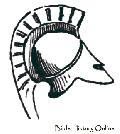
|
Etruscan Greek Classic Casque
|
|
Etruscan Greek classic casque from a painted vase in the Louvre |
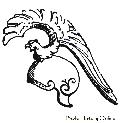
|
Rare And Artistic Greek Casque
|
|
Greek casque with rare and artistic shape from the paintings on an Etruscan vase. The crest holder represents a n eagle and is ornamented with horse hair. |

|
Greek Casque From An Antique Statue
|
|
Ancient Greek casque from an antique statue that shows fine embossed workmanship. Crest is ornamented with horsehair. |

|
Crest of Greek Casque
|
|
Crest of a Greek casque in bronze. From Museum of Artillery. |
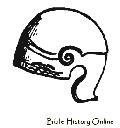
|
Greek Casque With Neck Covering
|
|
Greek casque with neck-covering in bronze. Belonged to a horseman of the decadence period. From Museum of Artillery, Paris. |
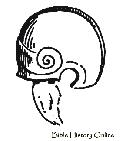
|
Greek Casque With Chin Strap
|
|
Ancient bronze Greek casque with chin-strap. Museum of Artillery, Paris. |

|
Greek Helmet Of A Horseman
|
|
Ancient Greek helmet of a horseman, with neck-covering and plume-holder. From the period of decadence. Museum of Artillery, Paris. |
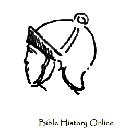
|
Head Of A Hastarius
|
|
Head of a hastarius (Roman legionary soldier) belonging to another legion, from the Trajan column. |

|
Roman Helmet In Bronze
|
|
Ancient Roman helmet in bronze. |
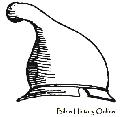
|
Samnite Helmet In Bronze
|
|
Samnite helmet in bronze, found at Isernia in ancient Samnium. In the Erbach collection, and dates as early as the second Samnite war (BC 327-324). |

|
Two Roman Helmets
|
|
Two ancient Roman helmets from the Trajan column. |

|
Roman Helmet In Iron
|
|
Roman helmet in iron, about 1 foot in height. Ornamented with bronze and dates from the time of the decline of the empire. One of the most curious of that age since the face is entirely covered by a sort of mask. In the Museum of Artillery in Paris. |
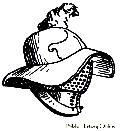
|
Roman Gladiator Helmet
|
|
Ancient Roman gladiator helmet from the Pourtales collection. Face is entirely protected by a fixed vizor, pierced all over with round holes. Use in the 16th century of our era, this is now in the Museum of St. Germain. |
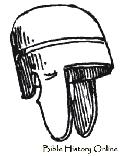
|
Roman Helmet Fount At Pompeii
|
|
Ancient Roman helmet found at Pompeii. Museum of Artillery in Paris. |

|
German Double Crested Helmet
|
|
German double crested helmet in bronze, found in one of the tombs in Hallstatt in Austria. Have an Etruscan shape which may very likely prove that this have been made in Italy. From Cabinet of Antiquities in Vienna. |

|
German Helmet In Bronze
|
|
Ancient German helmet in bronze, found in Halstatt cemetery. May very likely have been made in Italy because of its Etruscan shape. From Cabinet of Antiquities in Vienna. |
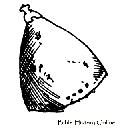
|
German Helmet In Bronze With An Assyrian Shape
|
|
Ancient German helmet in bronze, 3 1/2 inches in height. In the Klemm Collection at Dresden. With similar shape as those of Assyrian helmets. |

|
Gallic Bronze Helmet
|
|
Ancient Gallic bronze helmet, 11 inches in height and ascribed in France to the Gauls. Museum of Rouen. |

|
Two Bronze Helmets
|
|
Two bronze helmets, attributed by the Museum of St. Germain to the Gauls. |
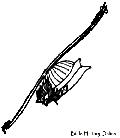
|
Framework Of A Boss In Bronze
|
|
Framework of a boss in bronze, with iron bar that passes under the boss. From Museum of Saint Germain. |

|
British Bronze Helmet
|
|
British bronze helmet found in the Thames and preserved in the British Museum. In beaten work and ornamented with incrustations in colored cement which resembles enamel. Bronze Age. |
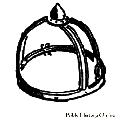
|
Framework Of British Helmet
|
|
Framework of British helmet found at Leckhampton Hill. Bronze Age. From British Museum. |

|
Crest Of Danish Helmet
|
|
Crest of Danish bronze helmet, in a candlestick shape and 9 inches high. From the bronze age and preserved in the Copenhagen Museum. |

|
Scandinavian Head Band Helmet
|
|
Scandinavian head band sort of helmet from the bronze age. 5 inches high, engraved and hammered. From the Copenhagen Museum. |

|
Germanic Casque From Codex Aureus
|
|
Germanic casque either of bronze or iron belonging to eight or ninth centuries. From MS of Codex Aureus. |

|
Carlovingian Casque
|
|
Carlovingian casque either in bronze or iron, 9th century. From the Ademari-Cronicon in the Imperial Library of Paris. |
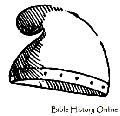
|
German Casque In Iron 10th Century
|
|
German casque in iron, of the 10th century, from the MS Psalterium. |

|
Carlovingian Casque Of The 9th Century
|
|
Carlovingian casque of the ninth century, either in bronze or iron. From the Bible of Charles The Bald in the Louvre. |

|
Half-Conical German Casque
|
|
Half-conical German casque with nazal, called Norman casque. From the Martyrologium, a MS of the 10th century in the library at Stuttgardt. |
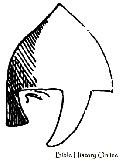
|
Conical Casque With Nose-Piece
|
|
Conical casque with nose-piece broader at the bottom. From a statuette of the 10th century. From the Collection of the Count of Nieuwerkerke. |

|
Casque Of Ancient Form
|
|
Casque of ancient form, with crest and cheek-pieces, from a bust in silver, life size, in embossed work of the 10th century. From Convent of Saint Maurice, Canton Valais, Switzerland. |
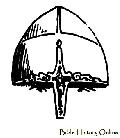
|
Casque Belonging To Saint Wenceslaus
|
|
Casque in iron, inlaid with silver, with fixed nose piece. Belonging to Saint Wenceslaus, who died in 935. From Cathedral of Prague. |

|
German Casque With Rounded Crown
|
|
German casque with rounded crown in iron. From an illumination in the Biblia Sacra of the 10th century. In the Imperial Library of Paris. |
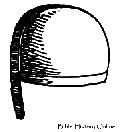
|
German Casque From MS Of The 11th Century
|
|
German casque in iron, with fixed nose-piece, from a MS of the 11th century, belonging to M. de Hefner-Alteneck. |

|
Anglo-Saxon Casque From Aelfric MS
|
|
Anglo Saxon casque with neck-guard, from the Aelfric MS of the 11th century in the library of the British Museum. |
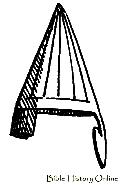
|
Conic Norman Casque
|
|
Ancient Conic Norman casque with nose-piece and neck guard. |

|
German Conic Casque
|
|
German conic casque with nose-piece, from a bronze bas-relief in the baptistery of the Cathedral at Hildesheim; the work of Saint Bernard in the 11th century. |
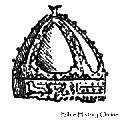
|
Casque Of The 12th century Attributed To Henry The Lion
|
|
Casque of the 12th century, attributed to Henry the Lion, Duke of Brunswick. The crown is of iron ornamented with a crest and six bands in gilt and engraved copper, and with an embossed band in front. The principal ornament of which is a lion. |
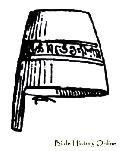
|
Anglo Saxon Casque With Nose Piece
|
|
Anglo-Saxon casque with nose-piece, of the end of the 12th century. From an illumination in the Harleian MS, in the library of the British Museum. |
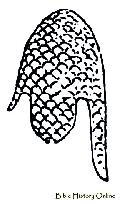
|
11th Century Russian Casque
|
|
Russian casque with small nose-piece and long neck-guard, made of iron imbricated or curved scales. Attributed in St. Petersburg to the 11th century. |
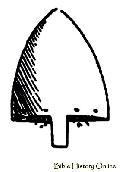
|
Small Conic Casque
|
|
Small conic casque in iron, with fixed nose-piece, of the 11th century, found in Moravia. From Ambras Collection. |
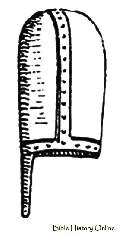
|
German Casque With Neck Guard Of The 11th Century
|
|
German casque with neck-guard of the 11th century. From the embroidery in the mitre belonging to the convent of Seligenthal. National Museum of Munich. |

|
Casque In Red Copper Of The 11th Century
|
|
Casque in red copper of the 11th century, with Greek cross and pierced holes. It was found in the Saone, and is now in the Museum of Artillery in Paris. |
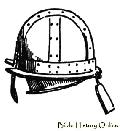
|
German Casque From The 12th Century
|
|
German casque with movable neck-guard and cheek plates, but with the nose-piece fixed. It is of the 12th century, and was found in the Somme. From Museum of Artillery in Paris. |
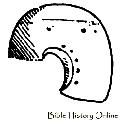
|
Bronze Casque With Neck Guard
|
|
Bronze casque with neck-guard of either the 10th or 12th century. Discovered in the river Lech. From the Maximilian Museum at Augsburg. |

|
German Casque Of The 13th Century
|
|
German casque with chin-piece and gorget affixed, and with open mezail, of the 13th century. From the German MS of Tristan and Isolde, by Gottfried of Strasburg. In the Library of Munich. |

|
Small Cap Of Mail
|
|
Small cap of mail of the 13th century. Found in a tomb at Epernelle. From Museum of Artillery in Paris. |

|
Small German Bassinet
|
|
Small German bassinet or skull-cap of the 13th century. It was worn over the camail and under the heaume. |
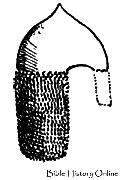
|
Small French Bassinet Of The 13th Century
|
|
Small French bassinet of the 13th century. It has a neck-guard of mail, and a fixed nose-piece, which has been broken and which appears to be the last trace of the nasal of the 10th and 11th centuries. From Museum of Artillery in Paris. |

|
German Heaume Of The 12th Century
|
|
German heaume of the 12th century. From the mural paintings i the Cathedral at Brunswick. |

|
12th Century German Heaume
|
|
German heaume of the 12th century. One of the earliest specimens of heaumes, casques of German origin, intended to be worn above the bassinet. |

|
Primitive English Heaume
|
|
Primitive English heaume, with nose-piece, of the end of the 12th century. It is of blackened iron, about 17 inches in height. From Museum of Artillery in Paris. |
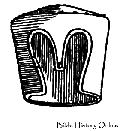
|
Early English Heaume
|
|
Early English heaume with nose-piece of the end of the 12th century. From Tower of London. |

|
13th Century Heaume Worn By Archers
|
|
Heaume worn by archers on foot and on horseback, of the 13th century. From the Cronicon Colmariense of 1298. |
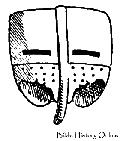
|
English Heaume Of The 13th Century
|
|
English heaume of the 13th century. From Museum of Artillery in Paris. |
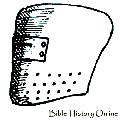
|
German Heaume Of The 13th Century From Tristan And Isolde MS
|
|
German heaume of the beginning of the 13th century. From the Tristan and Isolde MS, in the library of Munich. |
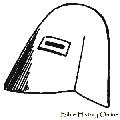
|
German Heaume From An Illumination In The Manessis Manuscript
|
|
German Heaume From An Illumination In The Manessis Manuscript preserved in the Imperial Library in Paris. |
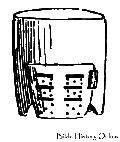
|
English Heaume With Hinged Flap
|
|
English heaume with hinged flap, beginning of the 13th century. From Tower of London. |

|
13th Century Heaume Preserved In The Museum Of Prague
|
|
13th Century heaume preserved in the Museum of Prague. |
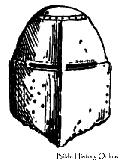
|
14th Century German Heaume
|
|
14th century German heaume. Found in the ruins of the Castle of Tannenburg. |
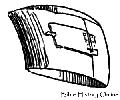
|
German Heaume Of The 14th Century
|
|
German heaume, end of the 14th century. From Museum of Artillery in Paris. |
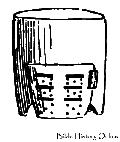
|
English Heaume With Hinged Flap
|
|
English heaume with hinged flap. From beginning of 14th century. |

|
13th Century German Heaume With Crest
|
|
13th century German heaume with crest. From the German Aenid of Henry of Waldeck. |
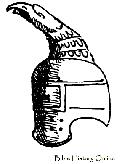
|
German Heaume With Crest Of The 13th Century
|
|
German heaume with crest, of the 13th century. From the German Aenid of Henry of Waldeck. |
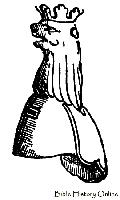
|
Large Heaume With Crest From The Cenotaph Of The King Of The Romans
|
|
Large heaume with crest from the cenotaph Of the King Of The Romans, Gunther of Schwarzburg. 13th century. |
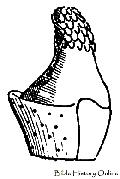
|
Large Heaume For Tilting
|
|
Large heaume for tilting, in polished iron, and with the remains of a crest, of the 14th century. From Museum of Artillery in Paris. |

|
Large English Tilting Heaume
|
|
Large English tilting heaume, in black iron, with wooden crest of the beginning of the 15th century. From Museum of Artillery in Paris. |
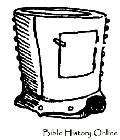
|
Large Tilting Heaume Of The 15th Century
|
|
Large tilting heaume of the 15th century, either English or German. It has a hinged flap or ventilator and a small collar, that was meant to be riveted on to the cuirass. |

|
Large English Tilting Helmet
|
|
Large English tilting helmet of polished iron with collar. From the end of the 15th century. |
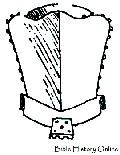
|
Large German Tilting Heaume Of The 15th Century
|
|
Large German tilting heaume of the end of 15th century. It is in polished iron and a small collar. From Museum of Artillery in Paris. |

|
Large Tilting Heaume Supposed To Have Belonged To Maximilian I
|
|
Large tilting heaume supposed to have belonged to Maximilian I. From Imperial Arsenal of Vienna. |
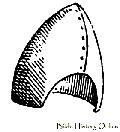
|
Bohemian Bassinet From The Voleslav MS
|
|
Bohemian bassinet from the Voleslav MS of the 13th century. Found in the library of Prince Lobkowitz at Raudnitz, Bohemia. |

|
German Bassinet Of The 13th Century
|
|
German bassinet of the 13th century. It is eleven by eight and a half inches, and is the Museum of Berlin. |
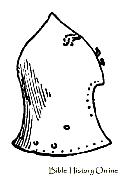
|
French Or Italian Bassinet
|
|
French or Italian bassinet of the 14th century, ornamented with 12 large screw-rings, with square holes for holding the rod on which the piece of mail was strung. |

|
Large German Bassinet Of The 14th Century
|
|
Large German bassinet of the 14th century, in black iron with movable mezail. The upper part of the vizor lifts up by means of hinge. The 20 large screw-rings, which fitted into the square-holes shown in the engraving, held the rod on which the piece of mail used as a neck-guard was strung. From Collection of M. de Hefner-Alteneck. |

|
Large Bassinet With Hinged Vizor
|
|
Large bassinet with hinged vizor. Made of polished steel, the crown is of pointed oval shape and in one piece. The vizor comes very forward, so as to leave a large space for the wearer to breathe freely. From Museum of Artillery in Paris. |
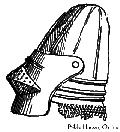
|
Large English Bassinet Of The Middle Of The 14th Century
|
|
Large English bassinet of the middle of the 14th century. The vizor lifts up by means of a pivot. From Warwick Castle. |

|
English Bassinet Of The 14th Century
|
|
Large English bassinet of the middle of the 14th century, with hinged vizor and fixed collar. From Tower of London and collection of M. de Renné at Constance. |
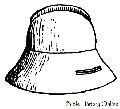
|
German Salade Heaume Of The 14th Century
|
|
German salade-heaume of the 14th century, used in tournaments. It had a fixed vizor and was worn straight. From Museum of Artillery in Paris. |

|
German Salade Of The 15th Century
|
|
German salade of the 15th century in a single piece and with a chin-piece. From the Collection of the King of Sweden, Charles XV. |
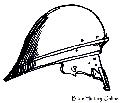
|
German Salade With Nose-Piece
|
|
German salade with nose-piece of the 15th century. From the Collection of M. de Renné at Constance. |

|
German Salade In Blackened Iron
|
|
End of the 15th century German salade in blackened iron, with movable vizor on a pivot. Comes from the Chateaux dOrt in Bavaria, must have been worn sideways with chin-piece. From Tower of London. |
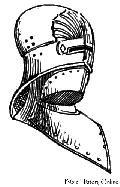
|
Salade With Sight-Piece In Shape Of Shell
|
|
15th century salade with sight-piece in shape of a shell, with chin-piece of a peculiar form and with a high collar. |

|
Salade Of The 15th Century
|
|
Salade of the 15th century with vizor and neck-guard, must have been worn sideways. The neck-guard is of the same piece and is small. From Museum at Prague. |
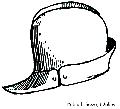
|
Salade With Crest Of The 15th Century
|
|
Salade with crest of the 15th century, from the Isle of Rhodes. This helmet has an ornamented vizor, and the neck-guard is of the same piece as the helmet. It did not protect the face and formed but an imperfect defence. The workmanship looks very like early Italian. |

|
German Salade Copied From The Statue Of Duke William The Younger
|
|
German salade to be used in battle, copied from the statue of Duke William the Younger, of Brunswick. It has a fixed vizor but movable chin-plate and gorget. |
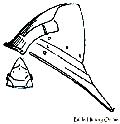
|
15th Century German Salade Used In Battle
|
|
15th century German salade used in battle. The crown is in a very unique pointed shape. The vizor is hinged and the neck-guard in plates of metal. The small print gives the front view. From Museé historique of the Monbijou Palace at Berlin. |

|
German Salade With Elongated Chin-Piece
|
|
15th century German salade with elongated mentonniére or chin-piece, which forms a sort of gorget or high-collar. |

|
Fluted Salade With Front Brim
|
|
Fluted salade with front brim of the 16th century. Comes from the Isle of Rhodes. |

|
English Salade From The Tower Of London
|
|
English salade from the Tower of London, where it is marked as being of the 15th century date. |

|
Venetian Salade Of The 15th Century
|
|
Venetian salade with nose-piece from the first half of the 15th century. From Meyrick Collection. |
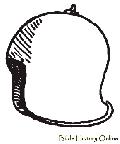
|
15th Century Venetian Salade With Crest
|
|
Venetian salade with crest, but without nose-piece, of the second half of the 15th century. From Meyrick Collection. |
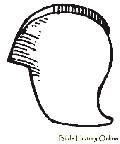
|
Venetian Salade For Archers
|
|
15th century Venetian salade for archers, with crest, but without nose-piece. From Museum of Artillery in Paris and Tower of London. |
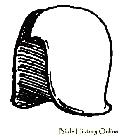
|
15th Century Italian Salade
|
|
Italian salade of the second half of the 15th century, from the bas-reliefs in white marble on the triumphal arch of Alphonso V, King of Arragon at Naples. |

|
Italian Salade With Vizor
|
|
15th century Italian salade with vizor. |

|
Burgonet Of The 16th Century
|
|
Burgonet of the 16th century. This sort of helmet is known by the crest, shade, cheek-pieces and neck-guard. |

|
16th Century Burgonet With Gorget And Mentonniere
|
|
16th century burgonet with gorget and mentonniére or chin-piece. From Museum of Artillery in Paris. |
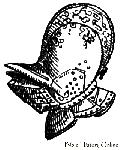
|
German Burgonet in Engraved Iron
|
|
Burgonet of the 16th century, with gorget, mentonniére and movable vizor. The workmanship is German and in engraved iron. From Ambras Collection. |

|
16th Century Burgonet
|
|
16th century burgonet. Formerly in the collection of the Castle of Laxemburg. From Imperial Arsenal of Vienna. |

|
German Burgonet
|
|
German burgonet from the Descriptions des Noces Princiéres, etc of Wirzig, a work printed in Vienna in 1571. From Industrial Museum of Vienna. |

|
German Burgonet Bassinet
|
|
German burgonet-bassinet of the 16th century. It is chiefly noticeable on account of its pointed shape and being without a crest. From Az Collection at Lintz. |
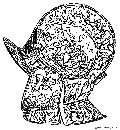
|
Italian Burgonet In Beaten Iron Of The 16th Century
|
|
Italian burgonet in beaten iron of the 16th century. In the Imperial Arsenal of Vienna, formerly in the Castle of Laxemburg. It is the finest specimen that exist. |

|
Burgonet Of The 17th Century
|
|
Burgonet of the 17th century. From Tower of London. |
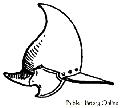
|
Burgonet-Cabasset Of The 17th Century
|
|
Burgonet-cabasset of the 17th century. In blackened iron, has a peak, cheek-pieces, neck-guard but no crest. The crown is pointed. From Arsenal of Geneva. |

|
Burgonet Used At Sieges Of The End Of 17th Century
|
|
Burgonet used at sieges, of the end of the 17th century. It is of very thick iron and has a flat neck-guard and peak. From Museum of Artillery in Paris. |
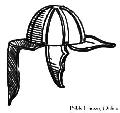
|
German Burgonet Skull-Cap
|
|
German burgonet skull-cap, of the beginning of the 17th century. It is covered with red velvet. From Guelf Museum at Hanover. |
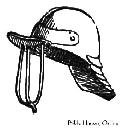
|
Burgonet Skull Cap Of The 17th Century
|
|
Burgonet skull-cap of the 17th century. A sort of vizor in the shape of a trident is fastened on to the peak and the neck-guard is of metal plates. From Tower of London. |

|
Polish Burgonet Skull Cap Of The 17th Century
|
|
Polish burgonet skull-cap of the 17th century. On account of the kind of fan on each side of the crown resemble those of the winged cavalry of Sobieski. From Museum of Dresden. |
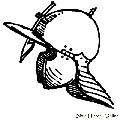
|
Hungarian Burgonet Skull Cap
|
|
Hungarian burgonet skull-cap in iron, with movable nose-piece and plated neck-guard called zucchetto. From Royal Arsenal of Turin. |
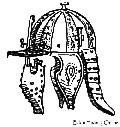
|
Burgonet Skull Cap Of The Middle Of The 17th Century
|
|
Burgonet skull-cap, with cheek-pieces, nasal vizor and plated neck-guard, of the middle of the 17th century. In engraved iron and studded with copper nail-heads. |

|
Burgonet Skull-Cap Belonged to Charles De Tyrol
|
|
16th century Burgonet skull-cap, with cheek-pieces and long plated neck-guard. It is said to have belonged to Charles de Tyrol. From Ambras Collection. |
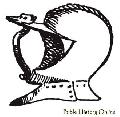
|
German Burgonet Of The 17th Century
|
|
German burgonet of the 17th century. Has a fixed nose-piece and the front part is like that of the armets. From Museum of Artillery in Paris. |

|
Burgonet Of The 17th Century In The Meyrick Collection
|
|
Burgonet of the 17th century, with plated neck-guard in the Meyrick Collection. |

|
English Burgonet Of The 17th Century
|
|
English burgonet of the 17th century in the Dresden Museum, erroneously attributed to Edward IV (1461-1483). The peak, the plated neck-guard riveted with gilt nail-heads, as well as the tinsel ornaments of the crest and the plume clasp shows that this piece of workmanship belongs to the 17th century. |
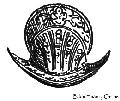
|
Italian Morion For Foot-Soldier Of The 16th Century
|
|
Richly engraved Italian morion or casque for foot-soldier of the 16th century. From the Arsenal of Geneva. Formerly belonged to the Savoyard captain Chaffardin Branaulien. |
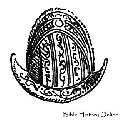
|
Engraved French Morion Of The 16th Century
|
|
Engraved French morion of foot-soldier of the end of the 16th century. From tower of London. |

|
German Morion Of the 16th Century
|
|
German morion of the end of the 16th century. The fleur-de-lys in embossed work on the front of the helmet was the badge of the civic regiment of the city of Munich, and is the symbol of the Virgin. In the Imperial arsenal of Vienna and Arsenal of the town of Munich. |
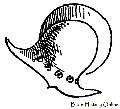
|
16th Century German Morion
|
|
16th century German morion with a rare shape. From Arsenal of Munich. |

|
German Morion with Large Screw On Top
|
|
16th century German morion with large screw on top, which distinguishes it from the usual morions. In the National Museum of Brunswick. |
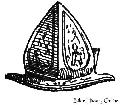
|
Cabasset Of The 16th Century
|
|
Cabasset or pear-shaped casque of the 16th century. Made of richly engraved iron with socket for plume. From Collection of M. le Comte de Nieuwerkerke. |
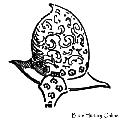
|
German Cabasset Of the 16th Century
|
|
German cabasset with cheek-pieces, in engraved iron of the 16th century. From Arsenal of Munich. |
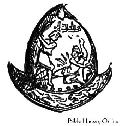
|
Italian Cabasset In Embossed Iron
|
|
Italian cabasset in embossed iron of the 16th century. |

|
German Cabasset In Blackened Iron
|
|
German cabasset in blackened iron, with socket for plume of the 16th century. The only ornaments of this helmet is of copper nail heads. |
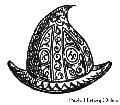
|
Engraved And Pointed Italian Cabasset
|
|
Richly engraved and pointed Italian cabasset for foot-soldier of the 16th century. From Tower of London. |

|
Armet Of The Second Half Of 15th Century
|
|
Armet of the second half of the 15th century. From Museum of Artillery in Paris. |

|
Armet With Small Plumes
|
|
Armet with small plumes of the 16th century. |
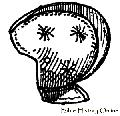
|
16th Century Armet In Tooled Leather
|
|
16th century armet in tooled leather. The lower part of the mezail is wanting, as also the vizor. From Arsenal of Geneva. |
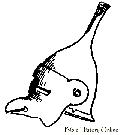
|
German Armet From the Triomphe de Maximilien
|
|
German armet of the 16th century from the Triomphe de Maximilien by Burckmayer in 1517. The vizor turns on a pivot and the lower half is in the shape of the beak of an eagle. |
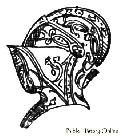
|
German Armet With High Mentonniere
|
|
German armet with vizor on pivot and high mentonniére, of the 16th century. Richly engraved and damascened. From Imperial Arsenal of Vienna. |
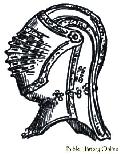
|
Richly Engraved German Armet Of The 16th Century
|
|
Richly engraved German armet of the second half of the 16th century, with vizor on pivot and high mentinniére. |
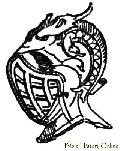
|
16th Century Armet With Maritime Subject
|
|
16th century armet. The dome is in embossed work and represents a maritime subject and with a latticed vizor. From royal Armoury at Madrid. |

|
Italian Armet Of The End Of The 16th Century
|
|
Italian armet of the end of the 16th century, richly chased in all parts. From Museum of Artillery, Paris. |
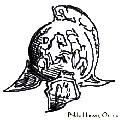
|
Italian Casque Copied From An Antique Called Caschetto
|
|
Italian casque, copied from an antique, called caschetto of the 16th century. In iron beaten work, chased and damascened. from Museum of Artillery in Paris. |

|
Italian Casque Of The Shape Called Antique
|
|
Italian casque of a shape called antique, but much resembling the burgonets of the middle of the 16th century. Now in the Museum of Artillery in Paris. |
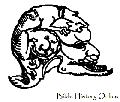
|
Casque Called Antique Russian
|
|
Casque called antique Russian, whose workmanship appears thoroughly Italian. From Museum of Tsarskoe-Selo at St. Petersburg. |

|
German Armet With Vizor Representing The Face Of A Man
|
|
German armet of the first half of the 16th century. The vizor represents the face of a man with mustache. From Meyrick Collection. |

|
Turkish Casque Belonged To Bajazet II
|
|
Turkish casque with movable nose-piece, in iron damascened with gold of the 15th century. Belonged to Bajazet II. In the Museum Of Artillery in Paris. |
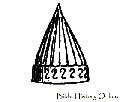
|
15th Century Turkish Casque
|
|
15th century Turkish casque found at Rhodes. From Museum of Artillery in Paris. |
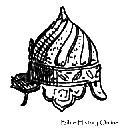
|
Turkish Casque Of The 16th Century
|
|
Turkish casque of the 16th century, formerly belonging to the Seraskier Soliman. Has nose-piece, cheek-pieces and neck-guard. From Meyrick Collection. |

|
Iron Casque With Copper Studs
|
|
Iron casque with copper studs worn by Jean Ziska (1420). |

|
Persian Casque From A MS Of 1600
|
|
Persian casque from a MS of about 1600, a copy of Schah Nameh. |

|
Mongolian Casque Of The 15th Century
|
|
Mongolian casque of the 15th century. From Museum of Artillery in Paris. |
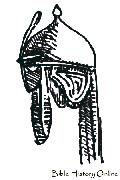
|
Indian Casque From Delhi
|
|
Indian casque from Delhi. The nose-piece is movable and the neck-guard is composed of small metal plates. |
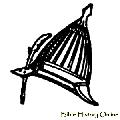
|
Mongolian Casque Found In The Battlefield Of Konlikowo
|
|
Mongolian casque in iron damascened with gold, with movable nose-piece and neck-guard. Found in the battle-field of Konlikowo. From Tsarskoe-selo Museum at St. Petersburg. |
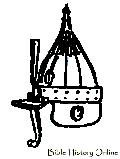
|
Russian Casque Richly Ornamented In Gilt copper
|
|
Russian casque with movable nose-piece and neck-guard of teh 15th century. Richly ornamented in gilt copper. In Museum of Artillery in Paris. |
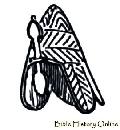
|
Russian Casque
|
|
Russian casque with cheek pieces, large neck-guard and movable nose-piece. From Tsarskoe-Selo Museum at St. Petersburg. |

|
Hungarian Casque Of The 16th Century
|
|
Hungarian casque of the 16th century, with cheek pieces, neck-guard and nose-piece. Belonged to the hero Nicolao Zrinyi. From Ambras Collection. |
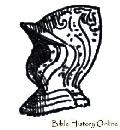
|
Italian Casque Belonging To Ascanier Sforza Pallavicino
|
|
Italian casque or burgonet belonging formerly to Ascanier Sforza Pallavicino, who took an important part in the naval battle of Lepanto in 1571. From Tsarskoe-Selo Museum at St. Petersburg. |

|
Pot-Helmet Of The 17th Century With Nose-Piece Screw In The Shape Of Fleur-De-Lis
|
|
Pot-helmet of the 17th century with cheek-pieces, neck-guard and movable nose-piece in thick iron, engraved, gilt and ornamented with shell like mountings and gilt studs. The screw of the nose-piece is in the shape of fleur-de-lis. |
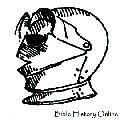
|
Savoyard Armet Of The 17th Century
|
|
Savoyard armet in blackened iron of the beginning of the 17th century.From Arsenal of Soleure. |
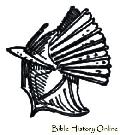
|
Polish Casque With Winglets Of The 17th Century
|
|
Polish casque with winglets of the 17th century. Worn by troops under Sobieski, who were called winged cavalry. From Tsarskoe-Selo Museum at St. Petersburg. |

|
German Tilting Casque Of The 17th Century
|
|
German tilting casque of the beginning of the 17th century. This helmet has a crest and neck-guard and is provided with screw for fastening to the placcate in front. Rather like the salade of the 15th century. From Museum of Artillery in Paris. |
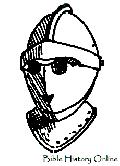
|
Armet of The Beginning Of The 17th Century
|
|
Armet of the beginning of the 17th century. Very like the savoyard helmet. from the Tower of London. |
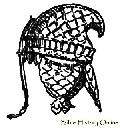
|
Indian Casque Ornamented With Precious Stones
|
|
Indian casque with neck-guard, cheek-pieces and movable nose-piece. It is ornamented with precious stones and the work is very beautiful. From Tsarskoe-Selo Museum at St. Petersburg. |
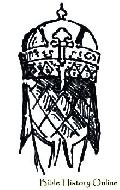
|
Polygar Casque Of Central India
|
|
Polygar casque of central India with fixed nose-piece, cheek-pieces and very long neck-guard or mail hood. From Meyrick Collection. |
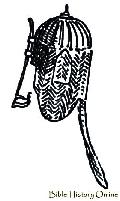
|
Indian Mahratta Casque
|
|
Indian mahratta casque. Has long movable nose-piece of singular shape, a large mail hood, which protects all the head, and a neck-guard like a tail which descends to the loins. From Meyrick Collection. |

|
Richly Ornamented Mongolian Casque
|
|
Mongolian casque with peak crest and socket for plume. Very beautiful and richly ornamented with damascened work. From Tsarskoe-Selo Museum at St. Petersburg. |

|
Japanese Casque With Neck-Guard
|
|
Japanese casque with neck-guard from the Imperial Library. |
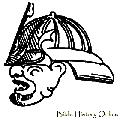
|
Japanese Helmet In Lacquered Iron
|
|
Japanese helmet in lacquered iron. Has a fixed nose-piece and neck-guard, the mask protects the entire face. From Museum of Artillery in Paris. |
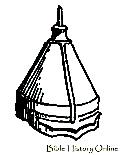
|
Conical Chinese Helmet
|
|
Conical Chinese helmet with peak. From Tower of London. |

|
Casque Belonging To The Emperor Of China
|
|
Casque in gold and precious stones that belonged to the Emperor of China and was taken at Pekin in 1860. From Museum of Artillery in Paris. |

|
Helmet Found in the Field of Cannae
|
|
Helmet found in the field of Cannae. In the British Museum. |
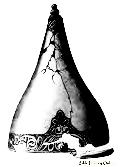
|
Gaulish Helmet
|
|
Discovered in a Gaulish Cemetery at Berru. |
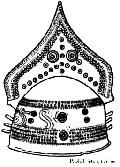
|
Gaulish Helmet
|
|
Gaulish helmet. In the Louvre. |































































































































































































